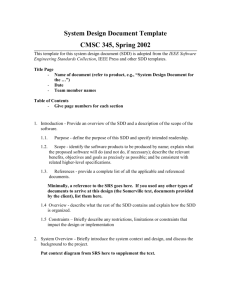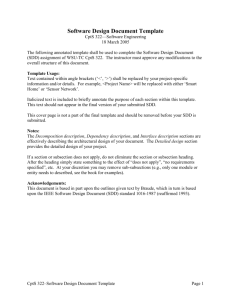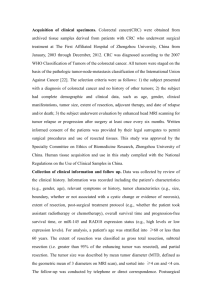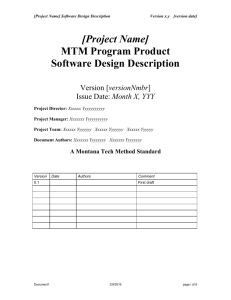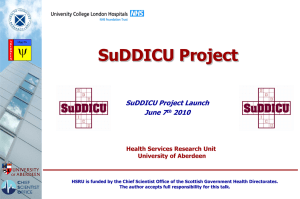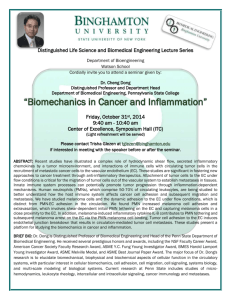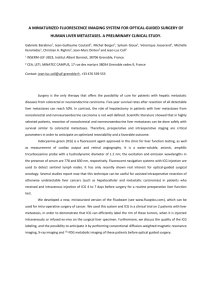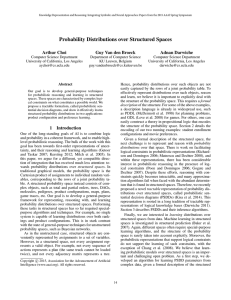SDD - nvge
advertisement
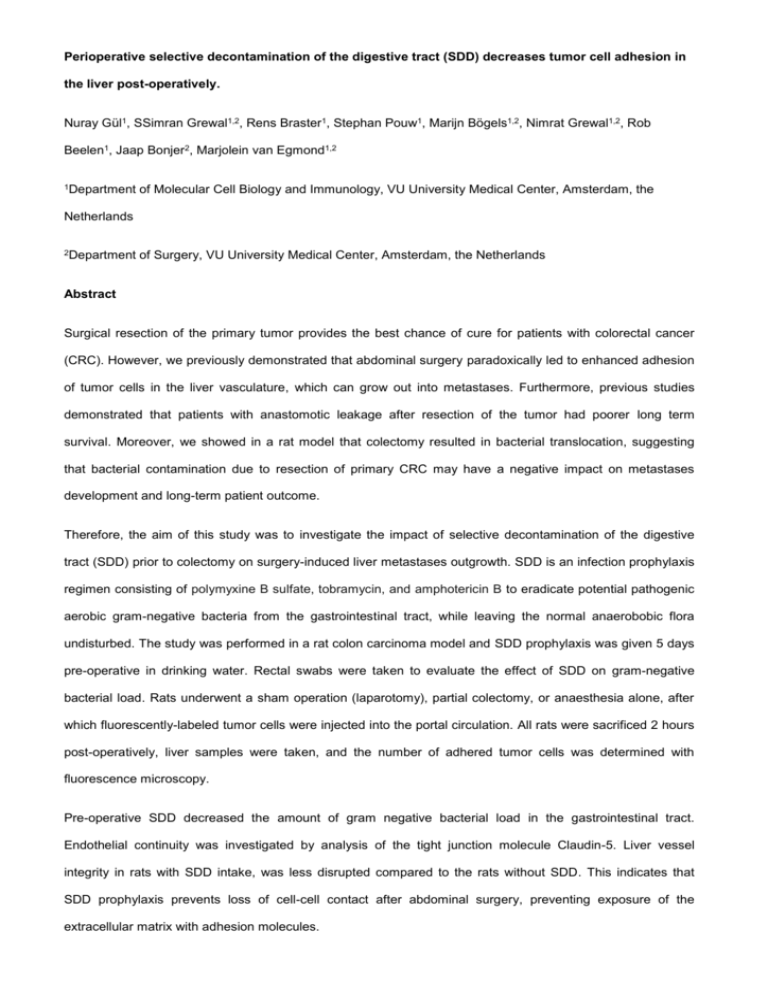
Perioperative selective decontamination of the digestive tract (SDD) decreases tumor cell adhesion in the liver post-operatively. Nuray Gül1, SSimran Grewal1,2, Rens Braster1, Stephan Pouw1, Marijn Bögels1,2, Nimrat Grewal1,2, Rob Beelen1, Jaap Bonjer2, Marjolein van Egmond1,2 1Department of Molecular Cell Biology and Immunology, VU University Medical Center, Amsterdam, the Netherlands 2Department of Surgery, VU University Medical Center, Amsterdam, the Netherlands Abstract Surgical resection of the primary tumor provides the best chance of cure for patients with colorectal cancer (CRC). However, we previously demonstrated that abdominal surgery paradoxically led to enhanced adhesion of tumor cells in the liver vasculature, which can grow out into metastases. Furthermore, previous studies demonstrated that patients with anastomotic leakage after resection of the tumor had poorer long term survival. Moreover, we showed in a rat model that colectomy resulted in bacterial translocation, suggesting that bacterial contamination due to resection of primary CRC may have a negative impact on metastases development and long-term patient outcome. Therefore, the aim of this study was to investigate the impact of selective decontamination of the digestive tract (SDD) prior to colectomy on surgery-induced liver metastases outgrowth. SDD is an infection prophylaxis regimen consisting of polymyxine B sulfate, tobramycin, and amphotericin B to eradicate potential pathogenic aerobic gram-negative bacteria from the gastrointestinal tract, while leaving the normal anaerobobic flora undisturbed. The study was performed in a rat colon carcinoma model and SDD prophylaxis was given 5 days pre-operative in drinking water. Rectal swabs were taken to evaluate the effect of SDD on gram-negative bacterial load. Rats underwent a sham operation (laparotomy), partial colectomy, or anaesthesia alone, after which fluorescently-labeled tumor cells were injected into the portal circulation. All rats were sacrificed 2 hours post-operatively, liver samples were taken, and the number of adhered tumor cells was determined with fluorescence microscopy. Pre-operative SDD decreased the amount of gram negative bacterial load in the gastrointestinal tract. Endothelial continuity was investigated by analysis of the tight junction molecule Claudin-5. Liver vessel integrity in rats with SDD intake, was less disrupted compared to the rats without SDD. This indicates that SDD prophylaxis prevents loss of cell-cell contact after abdominal surgery, preventing exposure of the extracellular matrix with adhesion molecules. SDD intake did not decrease the number of adhered tumor cells in the liver in the control and laparotomy groups. Importantly, tumor cell adhesion was significantly decreased in rats that underwent a partial colectomy after SDD intake. In conclusion, our results support that exposure to bacterial products after colectomy contributes to development of surgery-induced liver metastases, which can be reduced by a SDD antibiotic regime preoperatively. We therefore anticipate that SDD of patients undergoing CRC resection will significantly improve their prognosis.

